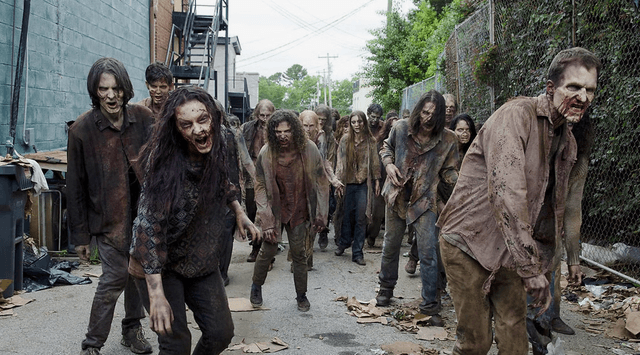If you click on a link and make a purchase we may receive a small commission. Read our editorial policy.
Like the character, E.T. the Extra-Terrestial's design was magic at its finest
E.T. was always the alien we wanted to take home with us

Thank you to Fanhome for sponsoring this article.
More than four decades after its release, so much about Steven Spielberg’s E.T. The Extra-Terrestrial remains groundbreaking and memorable — not least of which being the alien itself. Before the 1982 movie hit theaters, movie audiences had a pretty good idea what to expect when they thought of visitors from another world: either they’d be regular humans painted another color (usually green) with some kind of prosthetic to make them seem just that little bit less human, or they’d be some variation on the Little Grey Alien archetype common in the pop culture consciousness since the '50s. Aliens, for want of a better way to put it, had become just that little bit less… well, alien.
And then, E.T. arrived.
The design of E.T. the Extra-Terrestial

Bringing E.T. to life from a design perspective wasn’t an easy task: He had to look convincingly out of this world, but also cute enough that Elliott, Gertie, and the rest of the family would instinctively know that he wasn’t a threat, and fall in love with him; however, he also had to look unexpected and maybe even strange enough that Gertie would have reason to scream the first time she saw him. He had to look enough like a child that audiences would accept that he was Elliott’s best friend, the missing part of his life that had finally arrived. (And be short enough that he could convincingly be a kid trick’n’treating as a ghost when necessary, or fit in a bicycle basket when the story demanded, for that matter.) More than all of that, he had to look believable, and be able to act: unlike other movie aliens, E.T. (the movie) required E.T. (the character) to carry scenes all by himself, and maintain the illusion that he was a living, breathing, entirely lovable creature while doing so.

Making all of that happen fell to a handful of people, including director Spielberg himself, who famously made a photo composite of Albert Einstein’s face with a baby’s nose and chin to try and explain the mixture of innocence and wisdom that he felt the alien needed. The bulk of the design work, though, came from Italian special effects wizard Carlo Rambaldi, who’d previously worked with Spielberg on Close Encounters of the Third Kind. (There, notably, the aliens are far closer to the Little Grey Alien that I’d mentioned above.)
Rambaldi’s influences on the E.T. that audiences know and love are impressively varied; he took all of the demands of Spielberg and screenwriter Melissa Mathison and went further. Amongst the many things that played into the final look of the creature, according to Rambaldi’s own account, are Donald Duck — specifically, his lower half, apparently — as well as his own pet, a Himalayan cat whose eyes gave way to ET’s distinctive face. An earlier work of his also fed into the final design; a 1952 painting titled 'Donne del Delta' ('Women of the Delta', in English) featured a woman with an elongated neck… which, of course, turned into one of ET’s most distinctive features.
E.T. was always the alien we wanted to take home with us

The result is, perhaps, the most iconic of all cinematic extra terrestrials (fittingly, given his name). E.T. didn’t look like any movie alien that had come before, although he was recognizably not of this world. The Himalayan cat-look was, if nothing else, an unexpected spin on the idea of aliens as 'Bug-Eyed Monsters,' or 'BEMs,' as had been adopted as terminology by fandom at the time — and also a key to just what makes E.T. so memorable and so adorable to this day: he doesn’t only look alien, but unexpectedly familiar, as well, as if Rambaldi had imported not just the visuals of his pet cat, but a sense that E.T. was, in some way, one of the family — perhaps not a pet, exactly, but something close.
It’s not a cat that I necessarily think of when I look at E.T., but a dog; specifically, a pug. E.T. has a pug face, of course — the cute eyes, so far apart; the squashed nose — but he also has a pug body, with all the wrinkles and the squat shape. Pugs and E.T. both like to move awkwardly but surprisingly swiftly, too, underscoring their similarity. (Pugs are not quite as adept at using Speak & Spells, but I think it’s just because we’ve never really given them enough of an opportunity, personally.) Like a pug, E.T. is a perfect example of something that’s theoretically ugly, if looked at objectively, but in actuality is simply irresistibly cute — something, or someone, that instinctively draws out the need to befriend, protect, and… well, maybe just cuddle a lot, if given the opportunity.
Much like the character in the movie, the design of E.T. defies logic to no small degree. We can objectively point to the ways in which Rambaldi’s design is successfully alien and unexpected; no-one really talks enough about how weird and wonderful his feet are, for example. But the true success of E.T. is inexplicable in terms of logic; it’s in the way that it just takes one look at realize that he’s not going to hurt us, and simply wants to be loved. (To go home, too; where else could he be as loved, really?) What was done in designing E.T. was, simply, magical — and it’s that unexplainable magic that means that not only did we fall in love with him 41 years ago, but that we still love him today.
We all wanted to be Elliott, back in the day. If we're honest with ourselves, we still do. Who wouldn't want to bring E.T. home with them?
And now thanks to Fanhome you can! The experts in build-up collections and models has made an officially licensed hyper-realistic replica E.T. the Extra-Terrestial - that talks, lights up, and more. Read more about it and its world premiere at New York Comic Con 2023 here.
Follow Popverse for upcoming event coverage and news
Find out how we conduct our review by reading our review policy
Let Popverse be your tour guide through the wilderness of pop culture
Sign in and let us help you find your new favorite thing.
















Comments
Want to join the discussion? Please activate your account first.
Visit Reedpop ID if you need to resend the confirmation email.